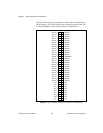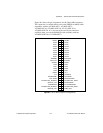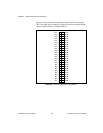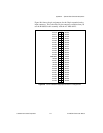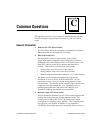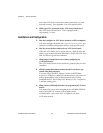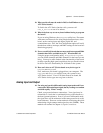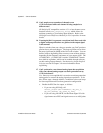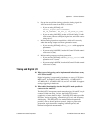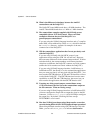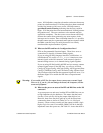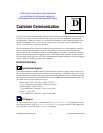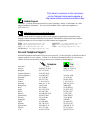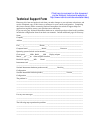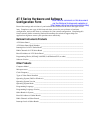
Appendix C Common Questions
National Instruments Corporation C-5 AT-MIO/AI E Series User Manual
b. Set up data acquisition timing so that the timing signal for
A/D conversion comes from PFI5, as follows:
• If you are using NI-DAQ, call
Select_Signal(deviceNumber,
ND_IN_CONVERT, ND_PFI_5, ND_HIGH_TO_LOW).
• If you are using LabVIEW, invoke AI Clock Config VI with
clock source code set to PFI pin, high to low, and clock source
string set to 5.
c. Initiate analog input data acquisition, which will start only
when the analog output waveform generation starts.
• If you are using NI-DAQ, call DAQ_Start with appropriate
parameters.
• If you are using LabVIEW, invoke AI Control VI with control
code set to 0 (start).
d. Initiate analog output waveform generation.
• If you are using NI-DAQ, call WFM_Group_Control with
operation set to 1 (start).
• If you are using LabVIEW, invoke AO Control VI with control
code set to 0 (start).
Timing and Digital I/O
18. What types of triggering can be implemented in hardware on my
AT E Series board?
Digital triggering is supported by hardware on every AT E Series
MIO board. In addition, the AT-MIO-16E-1, AT-MIO-16E-2,
AT-MIO-64E-3, AT-MIO-16XE-10, and AT-AI-16XE-10 support
analog triggering in hardware.
19. What added functionality does the DAQ-STC make possible in
contrast to the Am9513?
The DAQ-STC incorporates much more than just 10 Am9513-style
counters within one chip. In fact, the DAQ-STC has the
complexity of more than 24 chips. The DAQ-STC makes possible
PFI lines, analog triggering, selectable logic level, and frequency
shift keying. The DAQ-STC also makes buffered operations
possible, such as direct up/down control, single or pulse train
generation, equivalent time sampling, buffered period, and
buffered semiperiod measurement.



